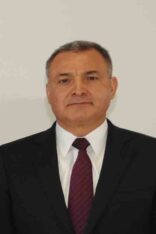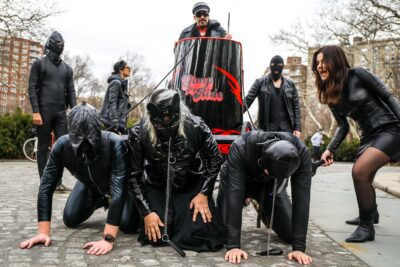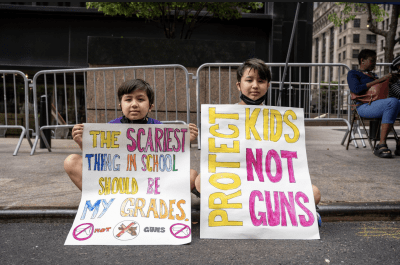'Brooklyn Federal Courthouse' by Diacritical is licensed under CC BY-NC-ND 2.0
How a federal court in Brooklyn became the go-to venue for prosecuting Mexican drug lords
The Eastern District Court of New York has found former Mexican police chief Genaro Garcia Luna guilty. But it was never a sure thing


Genaro Garcia Luna (courtesy U.S. Embassy in Mexico)
The jury in the Eastern District Court of New York had heard enough: a 23.5-ton load of cocaine worth $1 billion, bribes of $1 million a month, a cat named “Perico” (slang for coke), a drug lord’s zoo with giraffes, hippos, panthers, lions, pumas and kangaroos — all sufficient to find former Mexican police chief and federal security secretary Genaro Garcia Luna, 54, guilty of five charges, including one count of “Continuing Criminal Enterprise,” which carries a mandatory minimum of 20 years. He was charged with helping the Sinaloa cartel traffic drugs into the U.S. The jury reached a unanimous verdict on Feb. 21; Garcia Luna will be sentenced on June 27.
The worst fear for most Latin American drug lords since the 1980s heyday of Pablo Escobar in Colombia has been extradition. Traditionally, such cases have been tried in the southern border states like Florida, and the Southern District of New York, which was known for going after the mafia. But since the 2018-2019 trial of Joaquin “El Chapo” Guzman Loera in the Eastern District, the Brooklyn court has effectively become the go-to court in the nation for high-level Mexican officials and drug traffickers.
Garcia Luna oversaw a violent drug war from 2006 to 2012 as Mexican President Felipe Calderon’s security secretary — a position not unlike that of U.S. Department of Homeland Security Secretary Michael Chertoff — during which he was often accused of helping rival cartels while also waging political and turf battles against rival agencies and his country’s attorney general’s office. Previously, he had headed the AFI, Mexico’s equivalent to the FBI. But from the day he was arrested in Texas in 2019, his trial would spark another battle: a fight between various U.S. courts over who would get to prosecute him.
The winner: The Eastern District of New York at 225 Cadman Plaza. Sometimes regarded as a second-rate, little-brother-sort-of-court by its rivals over in Manhattan’s Southern District Court, the Eastern District’s jurisdiction spans Kings and Queens counties, as well as Richmond and two other Long Island counties.
The court was thrust into the global spotlight when its prosecutors went after the infamous drug lord Joaquin “El Chapo” Guzman Loera in 2019. He was wanted in seven jurisdictions across the U.S., and the Eastern District was granted the trial. But after their successful conviction of El Chapo, the Brooklyn prosecutors would find themselves blocked not by defense attorneys but by international politics: Following the California arrest of 72-year-old former Mexican Defense Secretary Salvador Cienfuegos in 2020, Mexico threatened to expel U.S. agents from Mexico; the Department of Justice subsequently urged the judge in the Eastern District to dismiss the charges, saying the general should be prosecuted in his own country.
Holding patterns
The DOJ cited “sensitive and important foreign policy considerations,” which they said “outweighed” prosecutors in the Eastern District’s eagerness to take the case to court. “Although these are very serious charges against a very significant figure, and the old ‘bird in hand’ adage comes to mind, I have no reason to doubt the sincerity of the government’s position,” said Judge Carol B. Amon shortly before dismissing the indictment in 2020. Cienfuegos was sent home to Mexico, a free man.
The Eastern District didn’t give up, though. They soon won the right to prosecute the case against Garcia Luna, in large part thanks to a bribery allegation that had surfaced during El Chapo’s trial in their own courtroom. The witness, a drug lord by the name of Jesus Zambada (also known as “The King”), claimed to have paid Garcia Luna $3 million on two occasions, in briefcases. It didn’t particularly matter that such vast amounts of money won’t fit into a briefcase; prosecutors figured they still had a case.
Making the case against Garcia Luna wouldn’t be easy though: Almost a decade ago, agents from the Drug Enforcement Administration made an attempt, based on some of the same testimony that eventually made it to trial this month in Brooklyn by a drug lord named Sergio Villareal Barragan (“El Grande”). But prosecutors in Texas said they didn’t have a case, according to Stephen Whipple, a retired DEA agent who worked out of the Houston office at the time. He and his colleagues at DEA had to drop it entirely.
“The guys were waiting for that magic phone call; somebody would get arrested in the U.S and we’d get a call,” says Whipple of the waiting game that followed. “Someone would say, ‘I paid Garcia Luna.’ And that’s exactly what happened with the Chapo trial. We were in a holding pattern, waiting.”
But once the Eastern District of Brooklyn asked for the case, they got it. “Main Justice,” as the Department of Justice’s Washington headquarters is known, ruled once again that the Brooklyn court was ready for another big drug trial involving Mexico.
‘I know how bribes are paid’
Garcia Luna’s trial lasted just over a month. In spite of promising thousands of audio tapes — some of which the judge ruled unintelligible — the prosecution relied solely on the testimony of cooperating witnesses and a few law enforcement officers. The defense attempted to rip through the testimony, which was mostly circumstantial but enthralling. Jurors heard tales of monthly meetings that allegedly took place between Garcia Luna and the highest-ranking drug lords in Mexico. But no details were offered about these meetings, and the drug lords’ testimony mostly failed to pass the bullshit test.
“I know how bribes are paid,” says Mike Vigil, a former DEA Chief of International Operations who worked in Mexico and knew Garcia Luna from his time in the private sector. “You have prosecutors who don’t really know how the drug trade works. [Relying on witness testimony] reeks of a very bad decision by the prosecutors. [It’s] people making shit up as they go along.”
Still, the jury — which had to swear not to have previous knowledge of the case or Garcia Luna and couldn’t pay attention to media coverage during the trial — apparently didn’t seem to notice or need solid evidence like recordings to find Garcia Luna guilty on all counts. Judge Shira Sheindlin, a former judge in the Southern District Court of New York, points out that thousands of hours of audio introduced during discovery weren’t produced during trial in what may have been an intentional strategy. She adds that skeptics shouldn’t regard the reliance on cooperating witnesses — some of them murderers and drug lords — as a failure.
“There is such a thing as too much evidence,” she says. “There’s no point in putting in duplicate evidence. You run the risk of contradicting yourself. [Prosecutors] only put in what they feel they need to prove their case. [The informants] were all bad guys, now they’re angels,” she says. “The prosecutor has to explain that. The jury accepts that, no matter what scumbags they are.”
Garcia Luna could face anywhere between 20 years and life in prison. He may appeal, but as of now, the only winner in this particular case appears to have been the prosecutors of the Eastern District of New York.
You might also like 


























